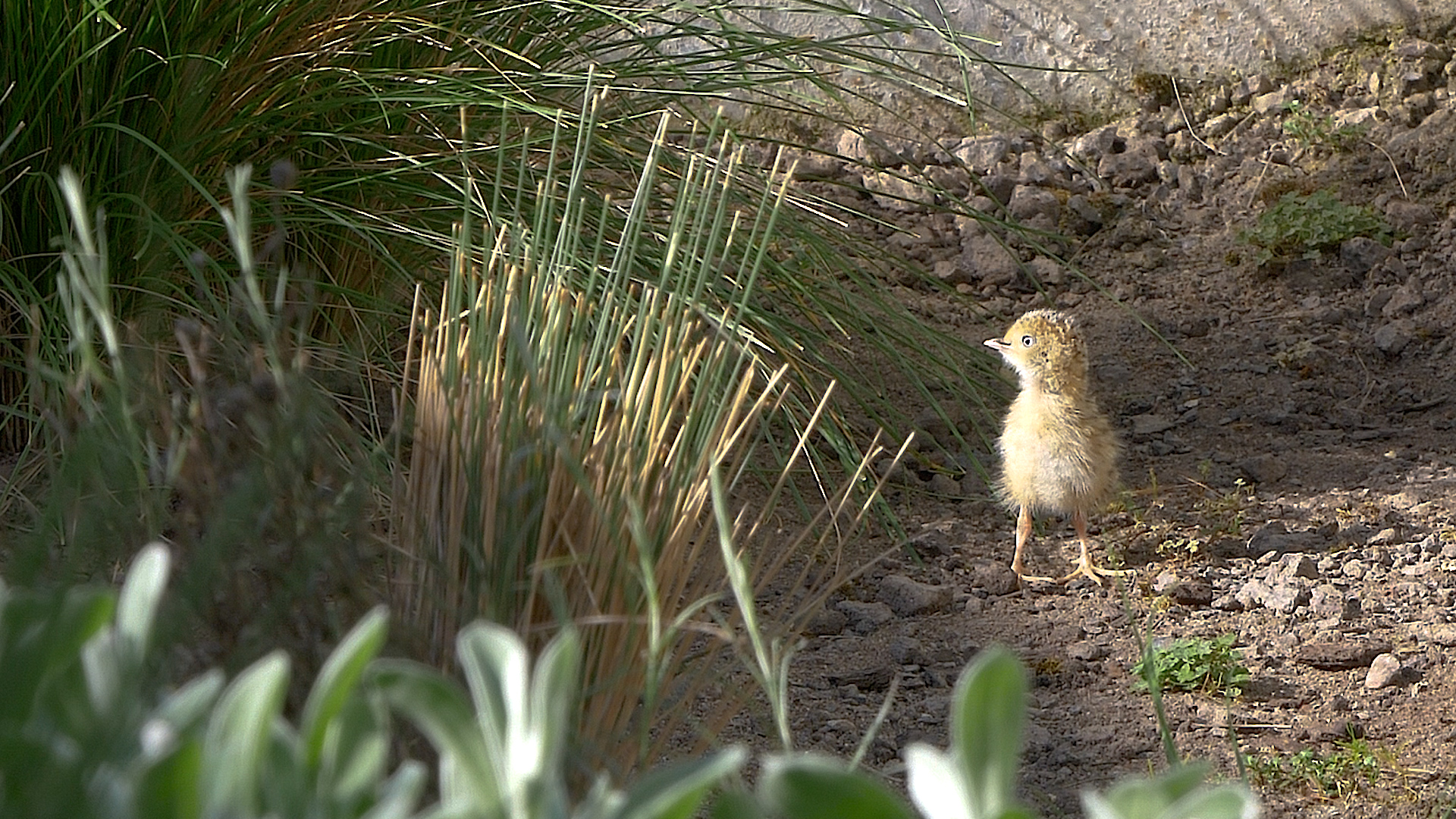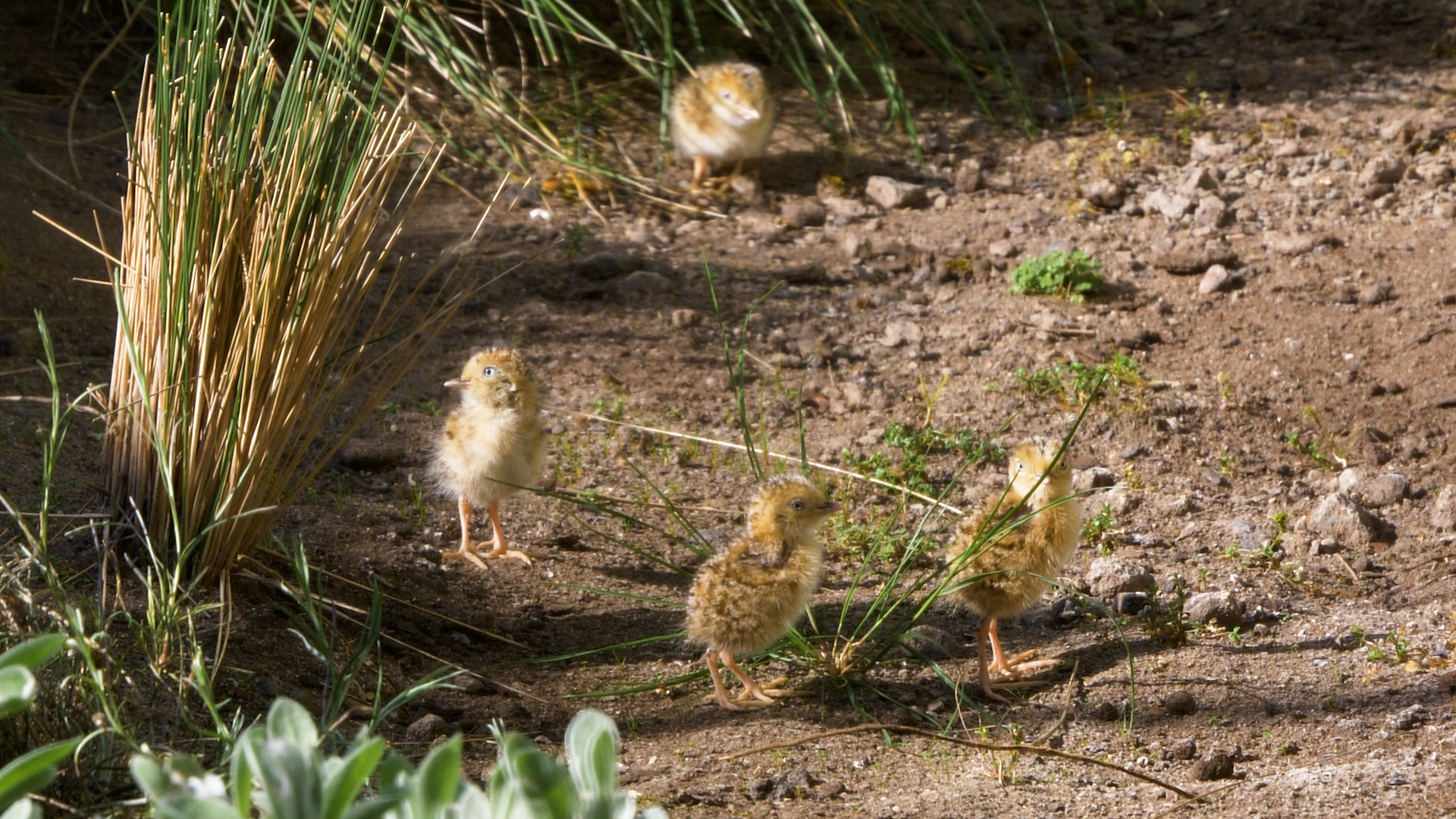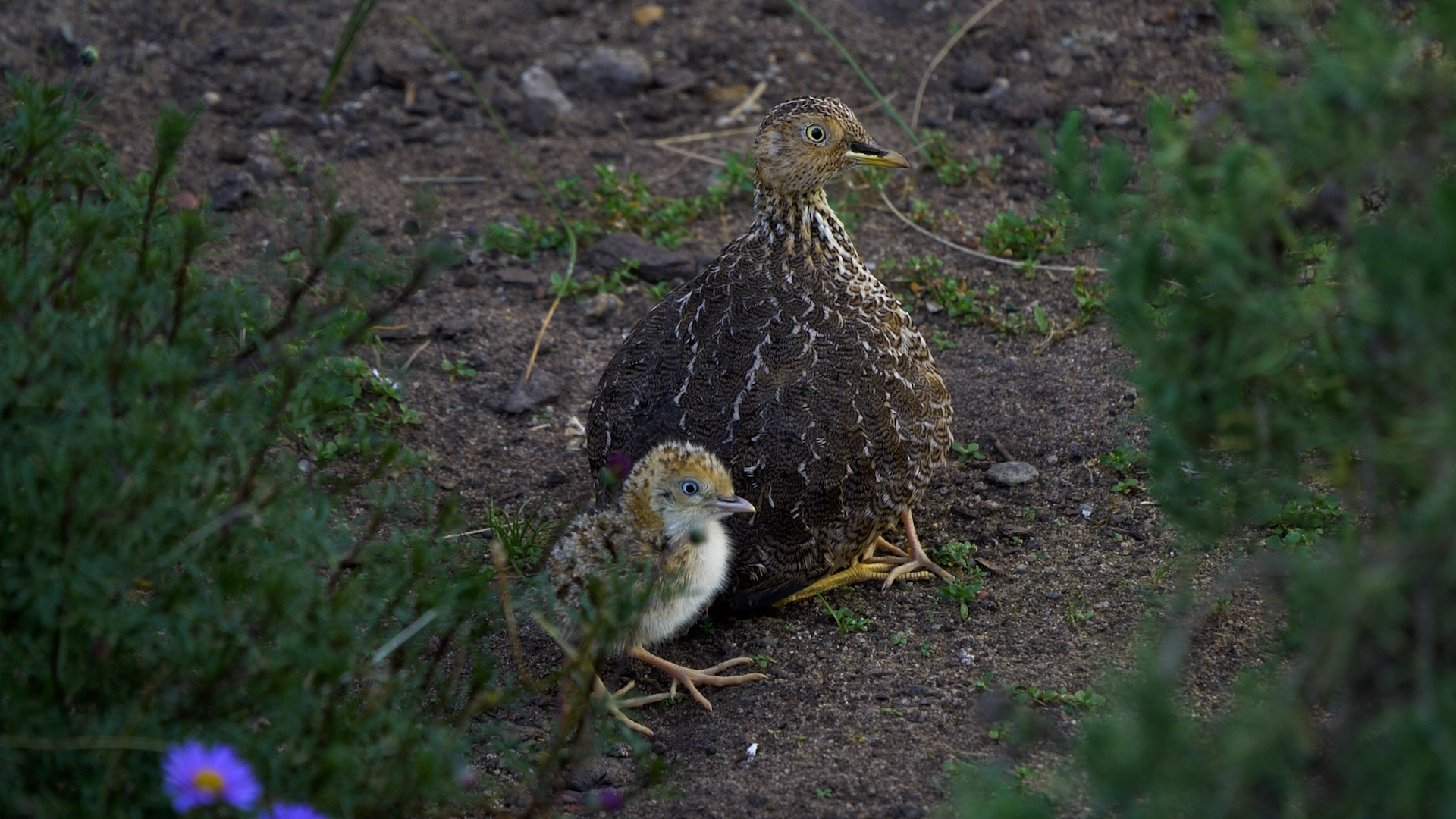Gold award for stunning courtship dance
One of the world's rarest and most eccentric courtship dances has resulted in the birth of four critically endangered golden-coated Plains-wanderer chicks at Werribee Open range Zoo.

The fluffy and healthy chicks, who each weigh a tiny five to six grams, hatched earlier this month to a mature male and female Plains-wanderer who were genetically paired in the Zoo’s threatened species program.
The charismatic native ground-dwelling avian is renowned for its quirky behaviours, but it is the flair of its romantic breeding season waltz that is melting hearts.
Werribee Open Range Zoo Natives keeper Malinda Delahant said the adult birds exhibit a variety of fascinating behaviours during this time of year.
“The female produces a deep, elongated ‘OOM’ sound to attract a male companion to her area, which is actually quite a stunning call for such a small bird,” Ms Delahant said. “She then stands on her tippy-toes and bows her head repeatedly and chases the male around with her wings outstretched - just like an aeroplane - to get his attention.”
The waltz is the final step of the Plains-wanderer courtship masterpiece.
“Once the female has secured the male’s interest, they circle and spin around one another repeatedly, closely side by side,” Ms Delahant said.
Following the romantic encounter, the male fulfils some very important housekeeping duties.
“Once the Plains-wanderer eggs are laid and chicks hatch, the male plays an important role in caring for them. He adorably grabs the empty eggshells in his beak, carries them and throws them away to protect the nest from predators.”

The four flourishing chicks now join 20 adult Plains-wanderers in the Zoo’s specialised threatened species program that provides invaluable genetics for the National Recovery Program. The program is dedicated to saving the species from extinction by replenishing wild populations in areas with habitat management strategies. A total of 44 chicks have been born at Werribee Open Range Zoo since 2018.

Wild Plains-wanderer populations have plummeted more than 85 per cent during the past 20 years due to extensive habitat destruction, impacts from grazing, a lack of understanding about the species and extreme weather events. It’s estimated that there are fewer than 1000 adult birds remaining in the wild, primarily in two remaining strongholds in Victoria’s Northern Plains and the New South Wales Riverina.
Plains-wanderers are a mysterious, elusive and shy little grassland bird identified by their distinctive straw-yellow coloured legs and bills and fawn plumage with fine black rosettes. They are genetically distinct from any other species on the planet, the last of their evolutionary line, and one of 27 Australian priority threatened species that Zoos Victoria is committed to saving from extinction.
The Plains-wanderer Recovery Team is a voluntary collaboration of government and conservation organisations who are working together to save this important native grassland bird from extinction. This includes: Australian Government Department of the Environment and Energy, Bush Heritage, Elanus Consulting, Featherdale Wildlife Park, Government of South Australia, North Central Catchment Management Authority, NSW Local Land Services, NSW Department of Planning, Industry and Environment, Northern Plains Conservation Management Network, Parks Victoria, Queensland Government Department of Environment and Science, South Australian Government, Taronga Conservation Society Australia, Trust for Nature, University of Sydney, Victorian Government Department of Environment, Land, Water and Planning, Zoos South Australia and Zoos Victoria.
Zoos Victoria would like to thank and acknowledge funding partners; the Victorian Government, BirdLife Australia, the Limb Family Foundation, Andy McGillivray and Judy McGillivray and the Purryburry Trust.
